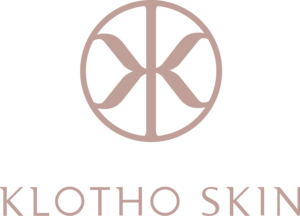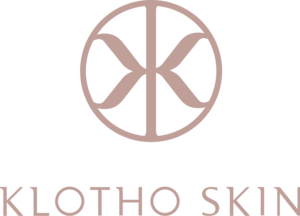Your shopping bag is empty
Go to the shopTechnology
Technology
DECADES OF RESEARCH
To view more about each finding, click on any of the timeline discoveries below.
1997
KLOTHO GENE DISCOVERED BY JAPANESE GROUP KUROSU ET AL
The aging-suppressor gene that was identified by Kurosu et al in 1997 was named Klotho. The overexpression of the mouse α-Klotho gene slowed the aging process and extended the life span by 20–30%. View official Study
2005
KUROSU ET AL DEMONSTRATED THAT THE OVEREXPRESSION OF KLOTHO PROTEIN INHIBITED INSULIN (INSULIN GROWTH FACTOR 1) SIGNALING AND INCREASED LIFESPAN
Suppression of aging in mice by the hormone Klotho: Klotho Protein functions as a circulating hormone that binds to a cell-surface receptor and represses intracellular signals of insulin and insulin-like growth factor 1 (IGF1), an evolutionarily conserved mechanism for extending life span. Inhibiting insulin IGF1 signaling activates transcription factors that increase cellular protection against oxidative stress and may contribute to suppression of aging. View official Study
2006
SCIENTISTS CONTINUE TO STUDY LINKS BETWEEN KLOTHO & GROWTH FACTOR SIGNALING
REGULATION OF FIBROBLAST GROWTH FACTOR-23 SIGNALING BY KLOTHO: The Klotho Protein directly binds to multiple FGF receptors (FGFRs). View official Study
2008
THE PHYSIOLOGICAL RELEVANCE OF AMPK IS DEMONSTRATED AND ITS ROLE IN THE REGULATION OF ENERGY HOMEOSTASIS IS ESTABLISHED
AMPK: a metabolic gauge regulating whole body energy homeostasis: Science accumulates evidence that AMPK is involved in the regulation of energy balance at the whole-body level by responding to hormones and nutrient signals, which leads to changes in energy homeostasis. View official Study
REVOLUTIONARY STUDIES
Studies performed by Gail Humble M.D. & the Klotho Skin team.
2018
DISCOVERY OF AGING GENE LEADS TO FORMULATION OF THE MOST EFFECTIVE ANTI-AGEING COSMECEUTICAL: KLOTHO SKIN
Studies performed by Gail Humble M.D. & the Klotho Skin team. View official Study
2020
KLOTHO PROTEIN EXPRESSION IN SELF CONDITIONED MEDIA BY GENE TRANSFECTION IN PRIMARY SKIN CELLS
This paper summarizes the development by Klotho Skin of the first and only mesenchymal cell in humans which has been genetically modified to produce the Klotho protein and second generation growth factors. This paper summarizes our patented process. GAIL HUMBLE M.D., CellVi Bioscience
2021
EFFECTS OF ADVICELL-K ON THE EXPRESSION OF A PANEL OF SKIN RELEVANT GENES INCLUDING THOSE THAT ARE TELOMERE PROTECTIVE
GAIL HUMBLE M.D., KRYS BOJANOWSKI, PhD. View official Study
EFFECT OF ADVICELL-K ON THE OUTPUT OF PROSTAGLANDIN E2, TYPE I AND IV COLLAGEN BY THE HUMAN DERMAL FIBROBLASTS AFTER UVB EXPOSURE
The objective of this project was to explore the effect of the test material listed in Table I on the output of prostaglandin E2 (PGE2), type I and type IV collagen by human dermal fibroblasts.
GAIL HUMBLE M.D., KRYS BOJANOWSKI, PhD. View official Study
EFFECT OF ADVICELL K ON THE OUTPUT OF PROSTAGLANDIN E2, TYPE I AND IV COLLAGEN BY THE HUMAN DERMAL FIBROBLASTS
In this study, we evaluated the protective effects of the Klotho protein and growth factors harvested from Klotho overexpressed mesenchymal stem cell in their cell conditioned medium (Advicell K) against ultraviolet radiation B (UVB)-induced photoaging in neonatal human dermal fibroblasts.. Presented at American Academy of Cosmetic Surgeons. View official Study
EFFECT OF ADVICELL K ON THE EXPRESSION OF A PANEL OF SKIN- ABSTRACT FINAL
The objective of this study was to measure the effect of the test material, Advicell K, on the expression of a panel of genes of interest, using quantitative PCR. Presented at American Academy of Cosmetic Surgeons. View official Study
UTILIZING THE KLOTHO PROTEIN & SECOND GENERATION GROWTH FACTORS FOR THE TREATMENT OF PHOTOAGING; A CLINICAL EXPERIENCE WITH TEN CASES - ABSTRACT FINAL
We developed a patented process in which we utilize a promoter gene and a vector on an adult mesenchymal stem cell in vitro, to upregulate the Klotho gene and produce the Klotho protein with highly potent growth factors. Presented at American Academy of Cosmetic Surgeons. View official Study. View abstract
2023
KLOTHO CONTAINING SERUM INDUCES A ROBUST PROTECTIVE RESPONSE IN HUMAN SKIN CELLS MEASURED USING A NOVEL SCREENING PLATFORM
In the present research we go further and look at the protective molecular response that klothos is able to induce in skin cells and report that klotho is an excellent candidate for both anti-aging and photodamage reduction interventions. View official Study
EXPLORING THE POTENTIAL OF KLOTHO PROTEIN AS A TOPICAL AGENT FOR SKIN PHOTOAGING AND PROTECTION
Sunblock has been touted as an essential component of every beauty regime to combat the damage of photoaging. This study suggests that the klotho serum is able to reduce the levels of oxidative damage induced by UVA exposure.
GAIL HUMBLE M.D. View Article
KLOTHO SKIN FORMULATIONS
For over 20 years, the founder and team at Klotho Skin have been studying the regenerative properties of the Klotho gene for implementation to skincare. Klotho Skin is dedicated to continuing research with the Klotho Protein and the benefits it offers.
RESEARCH GOALS
To create a cosmetic serum that will provide anti-aging benefits using a unique system of growth factors and the isolated Klotho protein.
To introduce a serum containing the Klotho Protein which has been shown to protect against oxidative stress on a cellular level.
TRUTHS
1. GROWTH FACTORS
Fibroblast, otherwise known as skin cells, are one of the first cells to respond to wound healing by secreting communication signals termed growth factors (GFs) to signal cellular proliferation and repair. As we age, the body produces a lower amount of fibroblast cells and growth factors which inhibits the body’s ability to defend itself against UV radiation and harmful environmental factors. Exposure to extreme environments, stress, poor nutrition, lack of sleep and causes free-radical damage and increased oxidative stress on a cellular level.
2. KLOTHO GENE
The Klotho gene is expressed in many tissues and cell types, and its over-expression in mammals extends lifespan due to its ability to mimic the caloric restriction pathway of cells. Further, the Klotho protein activates the FOXO forkhead transcription factors that are negatively regulated by insulin/IGF-1 signaling, which then facilitates oxidative stress resistance and directly protects cells from UVA and UVB radiation. In all, because of Klotho's ability to inhibit IGF-1 signaling and increase FOX01, cells develop increased resistance to oxidative stress as well as longevity and anti-ageing characteristics. Klotho expression declines by 60% in aging skin cells. View official Study
TECHNIQUES
We work with adult mesenchymal stem cells derived from fat and genetically alter them to upregulate the klotho gene. Stem cells secrete what is known as cell conditioned medium. Because the klotho gene is upregulated in our stem cells, we get the Kltoho protein and second generation growth factors in our cell conditioned medium.This cell conditioned medium makes up 25% of our Face Serum, 15% of our Eye Serum and 10% of our night cream.
RESULTS
Klotho Skin is the first skin care line to genetically modify adult mesenchymal stem cells to increase the Klotho protein and second-generation growth factors.
Klotho is an age-suppressing gene and protein that supports cell renewal and wound repair. The Klotho protein and second-generation factors make up 25% of the cell-conditioned medium in our face serum, 15% for our eye serum and 10% for our night cream and may be preventative, protective, and restorative.
Our formula is encapsulated in liposomal (fat-soluble) cells, allowing for the ingredients to overcome cellular absorption barriers and increase bioavailability.
Klotho Skin products stimulate Klotho gene expression and assist the skin in developing more collagen, decreasing the breakdown of existing collagen, and decreasing TEWL (transepidermal water loss). Further, we are able to initiate an anti-inflammatory process and the reversal of oxidative stress to skin cells, creating the appearance of younger and healthier skin.
CLINICAL STUDIES
HUMAN CLINICAL TRIALS
- We just received IRB approval to conduct a new clinical trial
- Study will be conducted by Dr. Steve Yoelin
- 10 subjects will use Klotho Skin face, eye, and night creme for 3 consecutive months
CELLULAR STUDIES
- Study was conducted by Amelia Technologies LLC
- Results showed a 40% reduction in DNA damage from UVA irradiation


